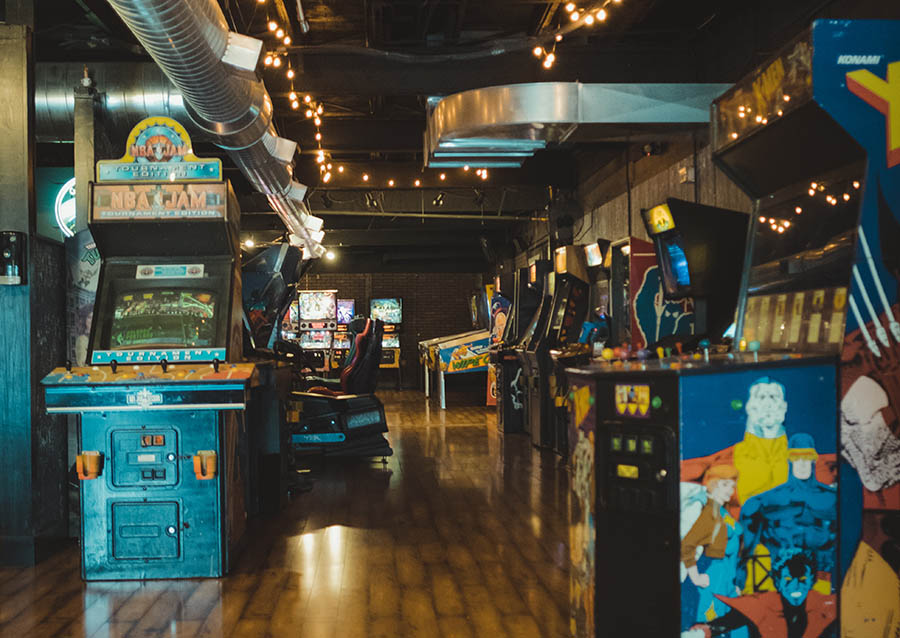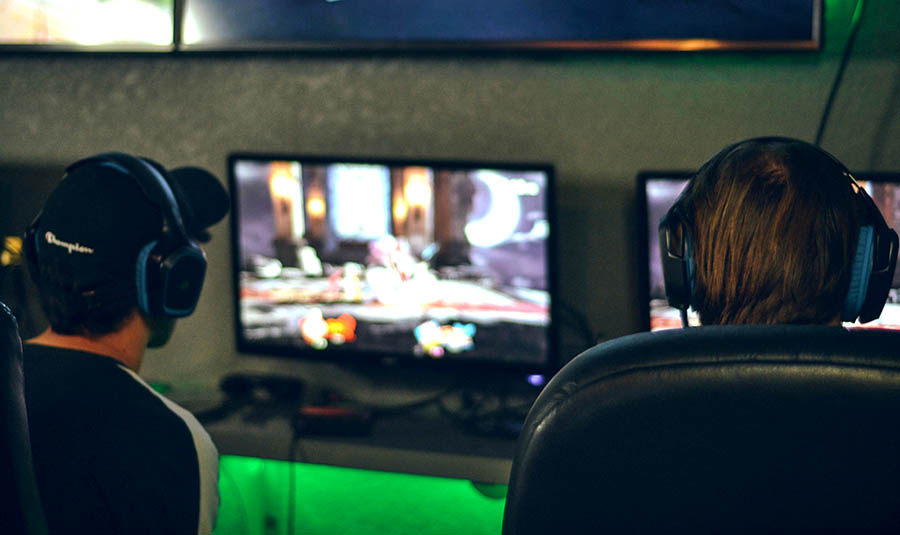The classics of gaming have influenced people’s own personal choice of games as much as they have informed the gaming industry across decades of development. The influence of the original arcade games like Street Fighter and Mortal Kombat can still be seen in a vast number of areas across many genres, not just in the fighting game community.
Even the classics have changed dramatically, with Mortal Kombat’s character roster growing from eight in the original and now totalling ninety-seven across all versions. Of all of the many outside influences on the game development industry, it is fair to say that esports has been one of the biggest, guiding developers to create games like Counter Strike: Global Offensive and Valorant. But what has esports done to our classics, and how did these games evolve from the retro classics of Doom, Street Fighter and Warcraft?
Before looking some games, however, it’s worth looking at what esports are and where they come from. Esports are, simply, video games that are played competitively. In many ways, playing against someone in Street Fighter in the arcade was a form of esports, though without the huge audiences that events can bring in today. Interestingly, even the origin of esports can be traced back to the classics. Atari held a tournament for Space Invaders with some 10,000 in 1980 for a chance to obtain the record high score.

Though it may not be recognisable as esports when compared to today’s matches, with player’s jerseys decorated with sponsors and arenas with stage lighting and pyrotechnics, esports clearly owes its success to the forefathers of gaming. That’s not to say that modern esports should be disregarded. Today’s gaming scene is more competitive than ever, with more and more people betting on the outcomes of the top tournaments. If you want to get involved, remember to use trusted esports betting sites to stay safe whilst you interact with one of the fastest growing sporting communities.
From Raiden to Ryu, What’s Happened to Fighting Games?
Street Fighter II has always been an arcade favourite, with an estimated $10 billion gross total revenue across the sales of the arcade machines and home versions. In many ways, Street Fighter kicked off the competitive gaming community with Tom Cannon’s “Battle by the Bay” in 1996. This 40 person tournament ran Super Street Fighter II Turbo and Street Fighter Alpha 2 and quickly became very popular, being renamed to the more familiar EVO, or the “Evolution Championship Series”. Later including a growing number of games in their competitive line-up, such as Mortal Kombat and Soulcalibur, and later the newly emerged Marvel vs. Capcom.
Thanks to tournaments like EVO, the fighting genre has stayed very faithful to its roots, the most significant changes to the format only being what characters are available and what console it is played on. In fact, thanks to the many classic gamers in the competitive scene, there are still controllers with the same layout as the original arcade machines. That’s not to say that there hasn’t been significant development in the genre itself – games like Nidhogg and its sequel show that there are still deviations from its ancestors, using the classic 16 bit art style and 2d player versus player gameplay but with new use of weaponry and fencing style.
Where Has Doom and Quake Taken the Industry?
The many classic retro first person shooter games have all but vanished over the many decades. Starting with the arcade’s favorite Time Crisis, a 1995 game by Namco that introduced a cover based approach to the light gun shooter games that became incredibly popular throughout the existence of major arcades. Two years earlier the world famous Doom was released by id Software on MS-DOS, considered one of the pioneering first-person shooters. Doom soon paved the way for Quake, the successor to Doom and included many more variations on the multiplayer aspect.
The unrealistic movement options presented for the players to utilise, from the unnatural jump height and changing direction in the air to being able to jump and shoot a rocket underneath them, “rocket jumping” and launching them into otherwise unreachable locations and the cost of health, meant that Quake was considered very unique for its time. Quake’s great multiplayer and interesting gameplay has left it known as one of the reasons that the first-person shooter has become so prolific in the esports community.

But where have these games led the development of the classics, and where has esports helped? Well, Quake is the best place to start. Or, more accurately, those who decided to mod Quake to change the way the game worked. Team Fortress Classic was a 1999 mod for Quake that introduced a class based system, with each class having unique abilities and weapons. This mod quickly obtained a large following and many unofficial tournaments cropped up around it. In the same year, Valve introduced Counter Strike, a game that ran on the Half Life engine. A more realistic shooter, two teams fought it out to capture or claim a target sight.
The realistic gunplay and excellent team aspect meant that a competitive scene quickly rose out of this game too, leading to Valve releasing Counter Strike: Source and Counter Strike Global Offensive, a game that today has had little changes but has a huge esports following. Combining the two together has lead to a huge array of unique esports titles: Blizzard’s Overwatch, Riot Games’ Valorant, and Valve’s Team Fortress 2, games with the same freedom of movement as the classic quake, but made with more unique art styles and a larger array of character abilities. It should be mentioned that, even if it is not used in the esports scene, Doom hasn’t fallen to the wayside. Bethesda game studios has kept the franchise going with Doom Eternal, a single player shooter with outstanding graphics that is still very reminiscent of its original.
Esports has taken many of our retro classics and taken them to places that, years ago, many of us could not imagine. The esport community has taken niche games and brought them into the mainstream, has kept our favourites up to date and has even invented brand new ideas, whilst still preserving the identities of the best of arcade and home console games that we all know and love. It doesn’t look like the industry will forget their ancestors any time soon.

